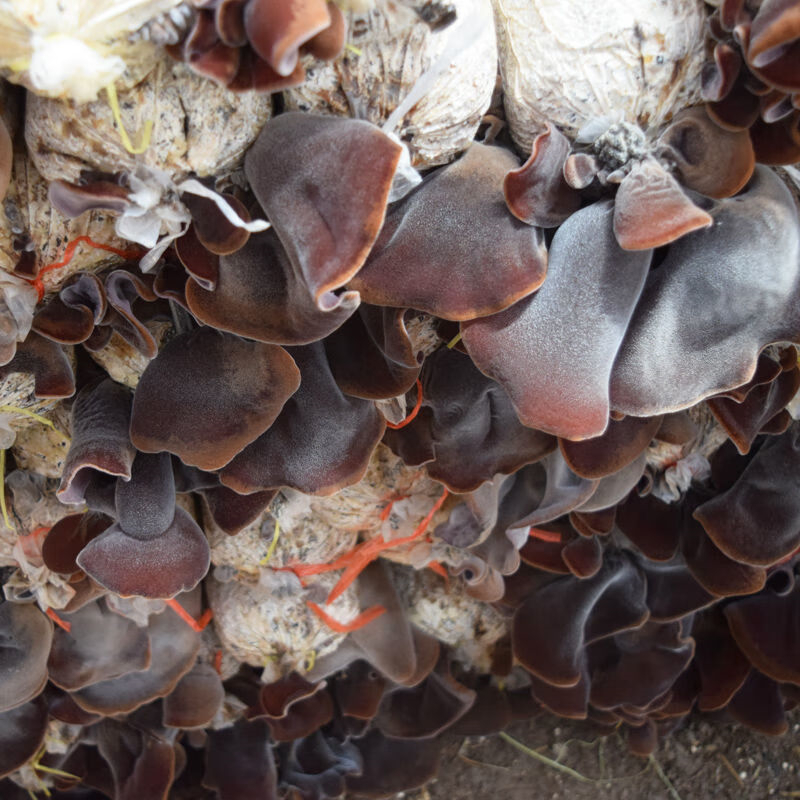
Pests are a significant factor affecting the yield and quality of edible mushrooms during autumn cultivation. Improper prevention and control measures can not only reduce yields but also lead to the complete loss of mushroom crops. This article provides an overview of common pests, their characteristics, and effective methods for prevention and control during the autumn and winter seasons.
Types of Pests and Identification
Mushroom Flies and Gnats
Common Species: Pleurotus fungus gnat, mushroom fungus gnat, many-spiked fungus gnat, fruit fly, etc.
Damage Characteristics: Larvae feed on mycelium and fruiting bodies, boring into the stipe and cap, causing hollow mushrooms or complete destruction of the substrateŌĆÖs mycelium.
Activity Conditions: Eggs hatch rapidly at temperatures between 16┬░C and 30┬░C, with larvae causing damage for 7ŌĆō18 days. Adults have short lifespans but reproduce quickly.
Mites
Common Species: Flour mites, straw mites, grain mites, etc.
Damage Characteristics: Primarily feed on mycelium but can also consume mushroom primordia and fruiting bodies. Infected substrate surfaces often appear white or reddish-brown.
Reproduction Speed: A single generation can be completed in 3ŌĆō8 days at 20┬░CŌĆō30┬░C.
Springtails
Common Species: Horned springtails, black horned springtails, etc.
Damage Characteristics: Damage mycelium and fruiting bodies, often hiding in gills or small crevices, contaminating and destroying mushroom tissue.
Activity Conditions: Become active above 15┬░C and reproduce rapidly at 22┬░C. Lifespans can range from six months to a year.
Nematodes
Common Species: Nematodes with stylets, such as mycelium nematodes, and those without, such as small rod nematodes.
Damage Characteristics: Destroy mycelial structures by feeding or mechanical disruption, causing the ŌĆ£mycelium diebackŌĆØ phenomenon.
Reproduction Speed: At 20┬░CŌĆō30┬░C, nematodes can mate and lay eggs within 8ŌĆō30 hours, completing a lifecycle in 8ŌĆō15 days.
Pest Prevention Methods
1. Substrate Fermentation Stage
Cover substrate piles with insect-proof nets to prevent pests from laying eggs on the substrate.
Spray high-efficiency, low-residue pesticides to deter pests while minimizing chemical residues.
Use sterilized substrate cultivation or secondary fermentation techniques to eliminate eggs and adult pests through high temperatures.
2. Spawn Running Stage
Install insect-proof nets on doors, windows, and ventilation openings in the spawn-running room. Ensure dark conditions to reduce pest risks.
Regularly inspect for pests and use low-concentration pyrethroid sprays or water mist to kill adult pests.
Keep the area around the mushroom house clean and away from pest-prone locations such as garbage dumps and animal shelters.
3. Fruiting Management Stage
Seal mushroom house doors, windows, and ventilation openings with high-density screens to prevent adult pests from entering.
Use well water or tap water for irrigation, avoiding stagnant water from ponds or ditches.
Spread lime powder at entrances to prevent mites and springtails from entering.
During fruiting intervals, spray formaldehyde or bleach-based solutions to achieve dual pest prevention and sterilization effects.
Causes of Pest Infestation
In autumn and winter, as temperatures drop, pests tend to seek warm environments, such as substrates or mushroom houses, to settle and reproduce. Many pests are introduced in egg form via the substrate or spawn. Their initial presence is often subtle, but their impact becomes more evident during the fruiting stage, by which time the best prevention opportunities may have passed.
Pest Control Methods
Early-Stage Infestations (Low Pest Density)
Spray pyrethroid-based pesticides with high efficiency and low residue on the air or substrate surface.
Moderate Infestations (Eggs Laid in Substrate)
Apply an 800-fold dilution of DDV pesticide to the substrate surface and cover with plastic film for 3ŌĆō5 hours.
Spray a 1,000-fold dilution of miticides for mites and cover with film for several hours.
For nematodes, apply a 0.5% formaldehyde solution and cover for 2ŌĆō4 hours.
Severe Infestations (Larvae Concentrated Inside Substrate)
After harvesting fruiting bodies, use phosphine for fumigation. Seal the mushroom house for 8ŌĆō10 hours, then ventilate and clean thoroughly.
Conclusion
The key to pest prevention and control lies in early detection and the integrated use of physical, biological, and chemical methods. Emphasizing prevention, minimizing pesticide residues, and taking timely and effective action during the early stages of infestation can significantly reduce losses caused by pests








